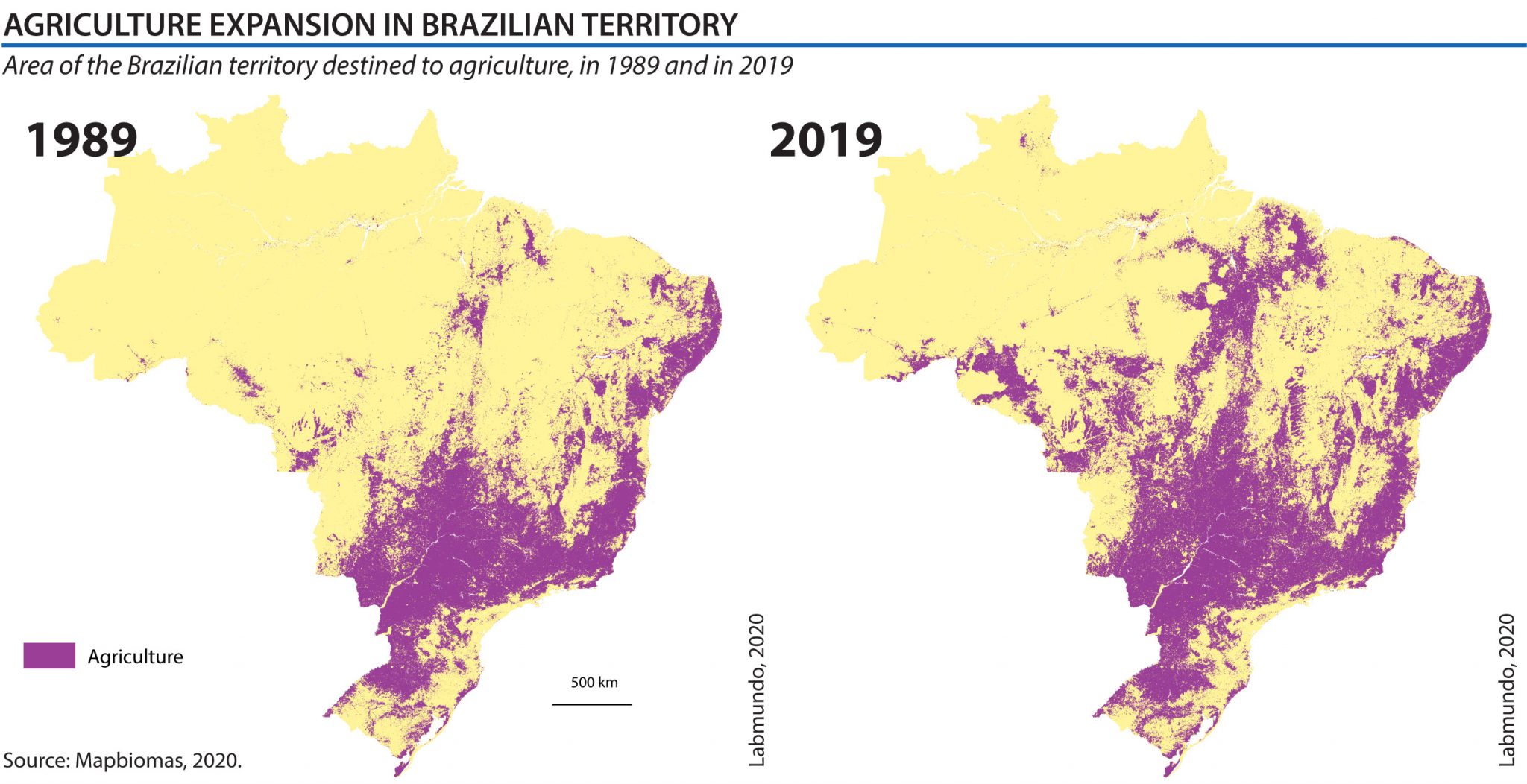RIO DE JANEIRO, BRAZIL – In an unprecedented study, the Institute for Forest and Agricultural Management and Certification (Imaflora) finds that Brazilian agricultural production has a strong concentration in a few crops.
The survey “Food Production in Brazil: Geography, Chronology, and Evolution” analyzed the period between 1985 and 2017.
In all years evaluated in the survey, five items – rice, sugarcane, beans, corn, and soybeans – always occupied at least 70% of the total area under cultivation in the country.
In the 2000s, soy gained a prominent role and overtook corn as the main Brazilian agricultural crop. In 2017, the oilseed occupied 43.2% of the area, followed by corn, 22.5%. Sugarcane (13%), beans (3.9%), and rice (2.6%) complete the main list.
The study reports the evolution of the agricultural frontier in the last decades, going from the growth of pastures between 1985 and 2006 to a substantial expansion of farming areas in the most recent period.
The expansion of agricultural areas was greater than that of pasture in 54.9% of the 558 microregions (group of municipalities defined by IBGE) between 2006 and 2017, while the growth of pasture areas was higher in 29.3% of the microregions. The expansion of forest areas was more elevated in only 15.8% of the regions.
In 2017, the area occupied by agriculture was 78.7 million hectares, increasing 26% compared to 2006 and 39% compared to 1988. Production, meanwhile, grew 57% compared to 2006 and 85% compared to the 1988 harvest.
“Overall, the increase in production was twice as large as the expansion of productive areas between 1988 and 2017, indicating productivity gains in the period,” the study finds.
“This large expansion of agriculture can be explained, among other factors, by the increase in sugarcane areas in the Southeast region and soybean areas in the Center-South,” says Vinicius Guidotti de Faria, Imaflora’s Geoprocessing coordinator.
The strong growth in the international demand for commodities pulled the increase in Brazilian production in the analyzed period. The volume of soy production grew by 536% and the area by 221%. In the case of corn, production increased by 295% and the region by 32%. And in the case of sugar cane, production grew 194% and the area 145%.
In the case of rice, the production area decreased 67%, but production increased 5.5%. A similar movement occurred with coffee, which lost 40% of its cultivation area, but, with gains in productivity, had an increase in production of 96%.


